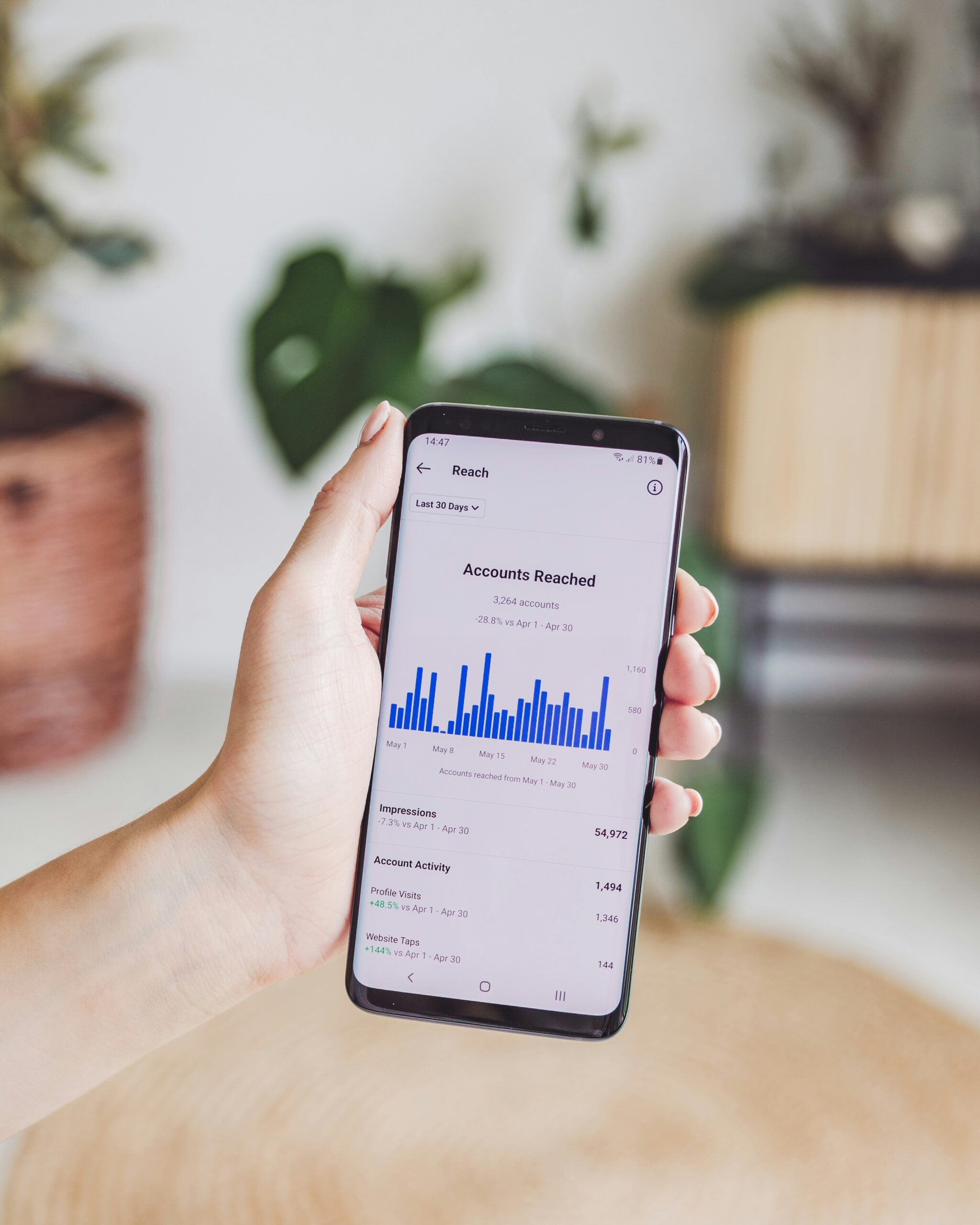Social media has evolved into a strategic powerhouse for businesses seeking smarter, more affordable customer acquisition. With dynamic tools, real-time data, and unmatched reach, platforms like Instagram, LinkedIn, and Facebook help brands boost visibility and generate high-converting leads. Small and large businesses alike can leverage these channels to build awareness, nurture relationships, and optimize spending. The key is knowing how to align efforts with acquisition goals and continuously refine engagement strategies. That’s where smart automation and analytics come in. Nurture Machine equips businesses with the tools needed to make social media a results-driven growth engine.
Key Takeaways
- Social media expands visibility, trust, and customer acquisition with targeted content.
- Audience targeting and automation reduce costs while improving conversion efficiency.
- Personalized messaging fosters stronger engagement and long-term loyalty.
- Smart analytics help optimize campaigns based on real-time performance.
- Nurture Machine simplifies lead nurturing with AI-powered, omnichannel tools.
What Role Do Social Media Platforms Play in Increasing Brand Awareness?

Social media platforms connect small businesses with large, engaged audiences, amplifying brand visibility without heavy ad spend. They enable the sharing of dynamic content—videos, images, stories—that reinforces brand identity across multiple touchpoints. Organic reach combined with paid promotions creates a multiplier effect as users share and comment on posts. Hashtags and trending topics further boost discoverability, driving both brand recall and search engine visibility. By fostering ongoing interaction, social media turns casual viewers into brand advocates, laying the foundation for sustained growth.
How Do Social Media Platforms Expand Business Visibility?
Social media offers a digital stage where brands can showcase products through engaging formats like short videos and live streams. Interactive features—comments, shares, and reactions—extend reach as audiences amplify content within their networks. Consistent posting across platforms ensures the brand narrative remains top-of-mind for followers. Hashtags and platform algorithms help surface content to new users interested in related topics. Cross-posting tailored content maintains momentum and reinforces brand recognition. This organic amplification often drives traffic back to owned channels, further increasing visibility.
Which Platforms Offer the Best Audience Targeting Options?
Each social network provides unique targeting capabilities to hone in on ideal prospects. Demographic and interest filters on mainstream platforms let businesses pinpoint users by age, location, and hobbies. Professional networks enable targeting by industry, job function, and seniority—ideal for B2B outreach. Lookalike audiences replicate top customer profiles to find new prospects with similar behaviors. Behavioral retargeting re-engages users who have interacted with previous content or visited the website. By combining these methods, businesses maximize relevance, reduce wasted spend, and boost acquisition efficiency.
How Does Increased Brand Awareness Lead to More Customers?
Repeated exposure to a brand through social media builds familiarity and trust, shortening the path to purchase when users are ready to buy. As audiences engage with content—liking posts or clicking through to learn more—they move deeper into the funnel. This ongoing recognition reduces perceived risk and raises the likelihood of conversion. Social sharing by satisfied followers acts as powerful social proof, influencing peers to consider the brand. Over time, broadened awareness translates into higher traffic, improved conversion rates, and an expanding customer base driven by both paid and organic interactions.
How Can Targeted Advertising on Social Media Improve Customer Acquisition?

Targeted social ads allow businesses to deliver personalized messages to users most likely to convert. These ads use real-time behavior data and user preferences to increase relevance and minimize wasted impressions. By focusing budgets on warm leads or specific interests, businesses improve conversion rates while lowering acquisition costs. Creative testing enables ongoing message refinement for better engagement. When aligned with funnel stages, ads guide users from awareness to decision. Automated retargeting reinforces interest, capturing users who’ve shown prior intent. This precision turns visibility into measurable acquisition outcomes.
What Are the Key Targeting Methods Used on Social Media?
Targeting methods include demographic filters, interest tags, behaviors, and retargeting options. Demographics help reach users based on age, gender, or location. Interest-based filters connect businesses to users already engaged with relevant topics or content. Behavioral targeting focuses on actions like past purchases or site visits, enhancing relevance. Retargeting re-engages users who’ve shown prior interest but haven’t yet converted. Custom audience creation allows for segmentation based on existing contacts. Combining these methods creates multi-layered campaigns that speak directly to user needs, making acquisition efforts more efficient and impactful.
How Do Businesses Optimize Ad Campaigns for Better Lead Generation?
Campaign optimization starts with continuous performance tracking—click-through rates, conversion rates, and ad engagement all provide essential insights. Businesses test different creatives, headlines, and calls to action to identify top performers. Segmentation by location, device, or time of day helps fine-tune delivery. Automation tools assist in budget allocation and creative rotation for efficiency. Retargeting warm leads ensures higher ROI on previously invested traffic. A/B testing reveals which versions drive the best results. Ongoing analysis enables timely strategy shifts, improving lead volume and quality over time.
What Budget Advantages Do Social Media Ads Offer Compared to Traditional Ads?
Social media offers flexible, scalable ad options that require far less investment than traditional media. Businesses can launch campaigns with small budgets and scale based on performance. Unlike print or TV, social platforms allow real-time edits and targeting tweaks without reprinting or reshooting. Detailed analytics ensure each dollar spent is traceable and adjustable. Campaigns can be paused or redirected quickly, minimizing loss. Cost-per-click and impression rates are lower, offering better ROI. Small businesses benefit from lower entry costs while maintaining competitive reach and acquisition impact.
How Does Enhanced Customer Engagement on Social Media Drive Acquisition?

Engaging with users through comments, replies, and direct messages fosters trust and builds community. These interactions create personalized experiences that make users feel heard and valued. Timely responses show attentiveness, encouraging potential customers to move further down the funnel. Interactive posts, polls, and questions increase visibility through shares and reactions. This visibility helps generate organic reach and brand familiarity. Positive engagements often lead to referrals and recommendations. The stronger the engagement, the more likely users are to convert. Engagement is key to turning followers into loyal customers.
What Types of Content Encourage Customer Interaction?
Visually appealing, interactive content like quizzes, polls, and videos drives higher interaction. Infographics simplify complex information, making it more shareable and digestible. Behind-the-scenes content adds authenticity and builds connection. User-generated posts encourage participation and community engagement. Contests tied to sharing or tagging increase reach while sparking excitement. Live videos open real-time dialogue and deepen trust. Carousel posts allow deeper storytelling that keeps users scrolling. Content that invites feedback increases engagement and strengthens acquisition potential.
How Does Direct Communication Build Trust and Loyalty?
Direct replies, comment acknowledgments, and personalized messages create transparency. Responding quickly to questions or concerns shows users they matter. A consistent tone across platforms helps reinforce brand identity and builds credibility. Transparency in addressing issues builds customer confidence. Two-way communication encourages customers to stay engaged longer. It also turns satisfied users into advocates. The more human the interaction feels, the deeper the connection. These ongoing dialogues reduce churn and strengthen customer relationships.
Which Engagement Metrics Indicate Successful Customer Acquisition?
Metrics like comments, shares, and click-through rates reveal content effectiveness. A high engagement-to-follower ratio suggests strong content alignment. Page visits and bounce rates show whether content holds interest. Conversion rates from social interactions indicate how well content drives action. Repeat interactions point to growing brand trust. DMs and saved posts suggest deeper user interest. Measuring these consistently helps fine-tune engagement strategies. Strong engagement metrics often lead to stronger acquisition results.
What Lead Generation Techniques on Social Media Are Most Effective?

Effective lead generation blends value-driven content with strategic prompts. Lead magnets such as ebooks or guides attract interested users. Short forms on landing pages convert curiosity into contact data. Interactive campaigns like quizzes and surveys collect insights while engaging users. Drip sequences and retargeting maintain user interest post-capture. Stories and reels drive action through urgency and visibility. Using platform tools like pinned posts and call-to-action buttons streamlines lead access. These techniques collectively support a lower cost and higher quality acquisition process.
How Do Contests and Giveaways Attract Potential Customers?
Contests tap into the user’s desire for free value and recognition. Giveaways drive participation by offering relevant, appealing incentives. Entry requirements like follows and tags expand audience exposure. Sharing mechanics turn participants into brand amplifiers. Time-limited offers create urgency and spur faster action. These activities create community and boost interaction metrics. Well-structured contests generate high engagement and useful customer data. They convert passive viewers into prospects with active interest.
What Role Do Lead Magnets and Forms Play in Capturing Leads?
Lead magnets provide value in exchange for customer information. Downloadable resources and gated content offer quick incentives for sign-ups. Well-placed forms streamline data collection during high-interest moments. When optimized, they reduce friction and increase completion rates. Personalization options on forms improve relevance and user trust. Visual simplicity boosts usability on both mobile and desktop. Clear messaging explains the benefit of submitting details. This method turns platform traffic into qualified marketing leads.
How Can Businesses Nurture Leads Acquired Through Social Media?
Lead nurturing uses targeted follow-ups to deepen interest and drive conversion. Email campaigns and remarketing ads reinforce the brand message. Personalized content keeps users engaged across touchpoints. Behavior-based sequences guide leads down the funnel at their pace. Consistent, relevant messaging maintains momentum and recall. Educational content helps establish expertise and solves user pain points. Incentives like exclusive offers encourage commitment. The more tailored the nurturing journey, the higher the conversion success.
How Do Businesses Measure the Success of Social Media Customer Acquisition Strategies?

Success is measured by connecting social media efforts to actual acquisition outcomes. This involves reviewing engagement patterns, conversion flows, and cost-effectiveness. Metrics like click-through rate and time on site offer insight into user interest. Analyzing these trends helps adjust strategies for better results. Tracking lead volume and quality ensures alignment with business goals. Data dashboards centralize information for quicker decisions. Regular reviews refine the marketing approach. This ensures social media remains a performance-driven acquisition tool.
Which Key Performance Indicators (KPIs) Are Most Relevant?
Relevant KPIs track both visibility and action. Conversion rate reveals how effectively users take desired steps. Cost per acquisition shows the efficiency of spend. Click-through rate highlights ad and content appeal. Engagement metrics reflect audience interest and response. Measuring reach and impressions captures exposure across platforms. Retention data ties back to ongoing brand loyalty. Lead quality scores assess how well prospects match your targets. These KPIs ensure marketing efforts stay focused and profitable.
How Can Analytics Tools Help Optimize Acquisition Efforts?
Analytics tools track real-time data across platforms and campaigns. They highlight which content, formats, and audiences perform best. Dashboards simplify comparisons between strategies and spending. Behavioral data guides adjustments to tone, timing, and format. Segmentation tools help refine targeting based on user activity. Integrations with automation platforms streamline follow-ups and updates. Performance alerts support proactive campaign tweaks. Together, these tools ensure smarter acquisition strategies at every step.
What Are Common Challenges in Measuring Social Media ROI?
ROI tracking often struggles with unclear attribution paths. Customer journeys span multiple platforms, making single-source credit tricky. Interactions like comments and shares may not directly link to purchases. Brand awareness is valuable but harder to quantify. Data from various platforms may not align or integrate easily. Inconsistent tracking setups reduce metric reliability. Benchmarks for success vary by industry and goal. Still, ongoing refinement helps clarify value and guide future investment.
Why Are Social Media Platforms a Cost-Effective Solution for Customer Acquisition?
Social media offers flexible budgets and precise targeting. Businesses can start with small daily spends and scale based on results. Campaigns can be adjusted instantly without sunk costs. Tools allow testing different approaches for minimal investment. Narrow targeting reduces wasted exposure. Organic content supplements paid reach for better efficiency. Clear feedback loops reduce trial-and-error costs. This makes it a practical, cost-smart channel for customer acquisition.
Frequently Asked Questions
How can businesses ensure that their social media campaigns are aligned with overall customer acquisition goals?
Start with clear acquisition goals and track metrics like conversions and CPA. Use automation tools like Nurture Machine to sync campaigns with the full customer journey. Direct traffic to conversion-optimized pages and use unified analytics for adjustments. Consistency across channels builds stronger acquisition paths.
What role does content personalization play in social media-based customer acquisition?
Personalized content boosts engagement and conversions by aligning with user interests. Nurture Machine’s segmentation tools automate this at scale, improving relevance. Custom visuals, messages, and CTAs increase response and trust, moving leads through the funnel faster.
How can small businesses compete with larger enterprises using social media advertising?
Small businesses win with precision targeting, fast testing, and agile content. Nurture Machine helps maximize ROI with automation and analytics. Focused messaging and smart budget control help smaller brands outperform larger ones in niche markets.
What strategies are effective in nurturing leads acquired via social media?
Use automation tools like Nurture Machine to deliver timely, tailored content. Follow up with emails, retargeting, and helpful resources. Monitor engagement to segment leads and send relevant CTAs. Consistency and personalization convert interest into action.
Conclusion
In today’s digital ecosystem, social media isn’t just a branding tool—it’s a high-impact acquisition channel. Businesses that understand how to harness its power through smart targeting, engaging content, and real-time analytics gain a competitive edge. From interactive posts to retargeting, the tactics are versatile, cost-effective, and scalable. When paired with platforms like Nurture Machine, businesses can automate, measure, and fine-tune strategies effortlessly. Whether you’re a growing startup or a scaling enterprise, the path to more customers starts with smarter social campaigns. Use every click, comment, and conversion to fuel sustainable growth.






